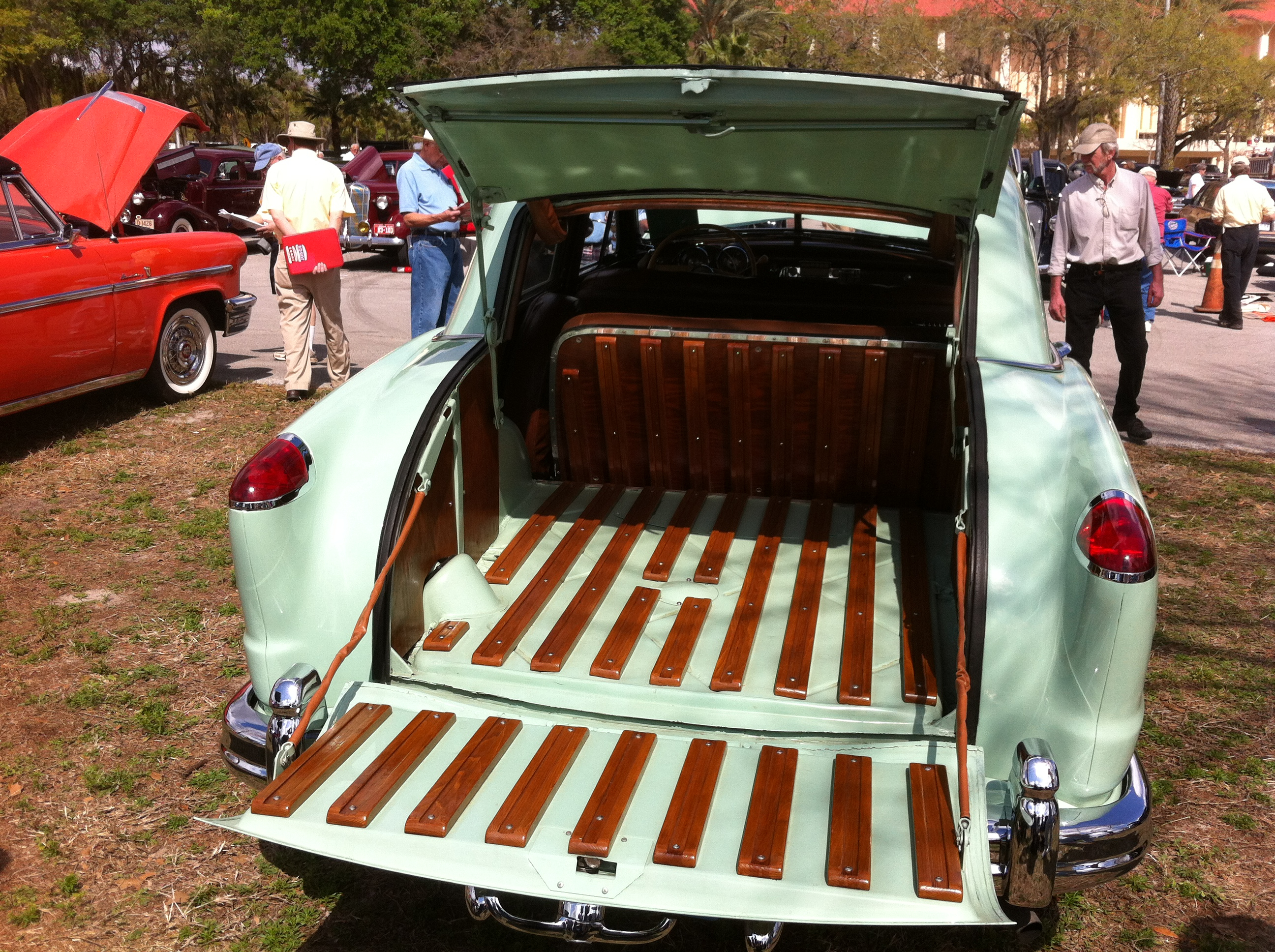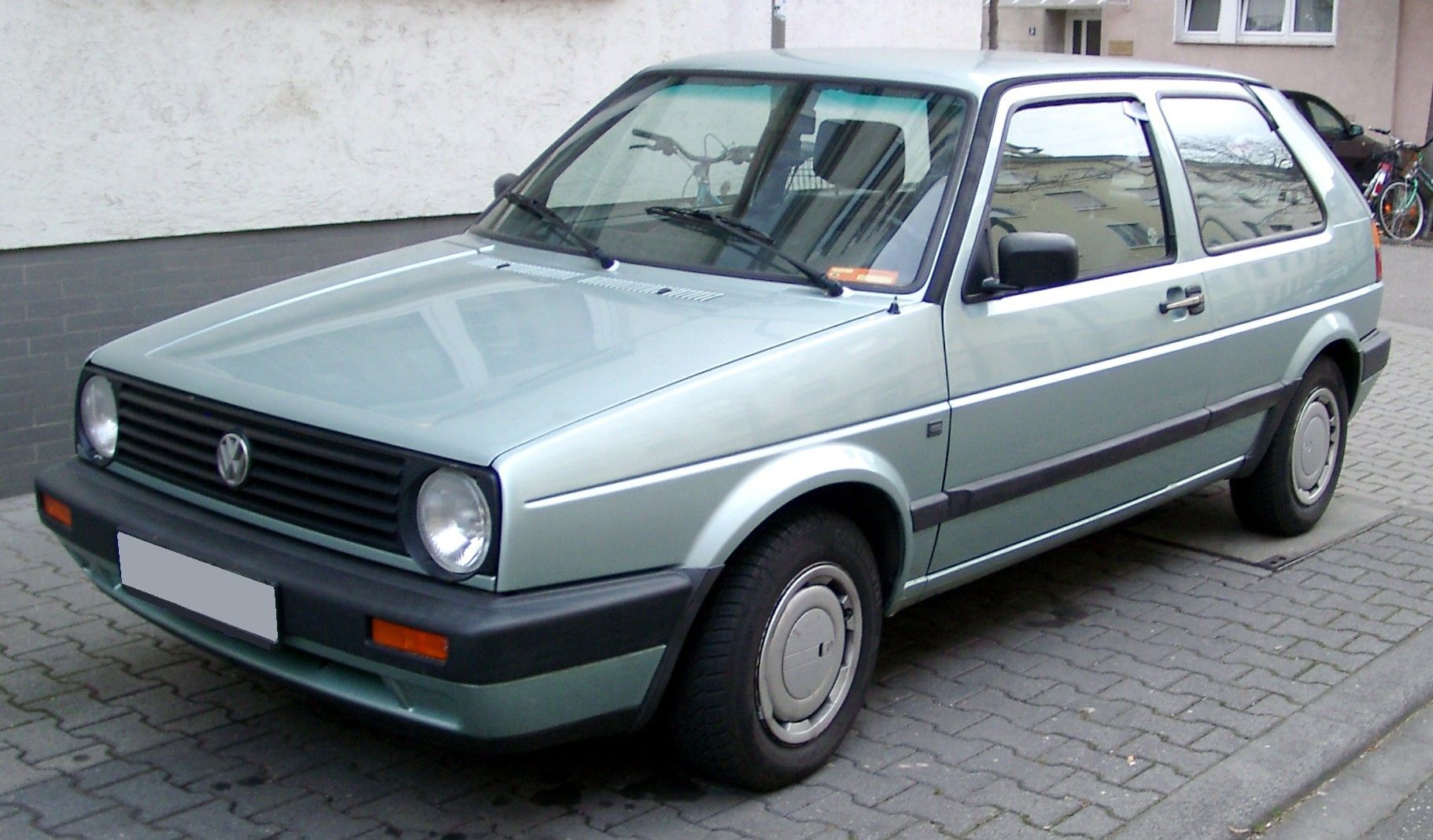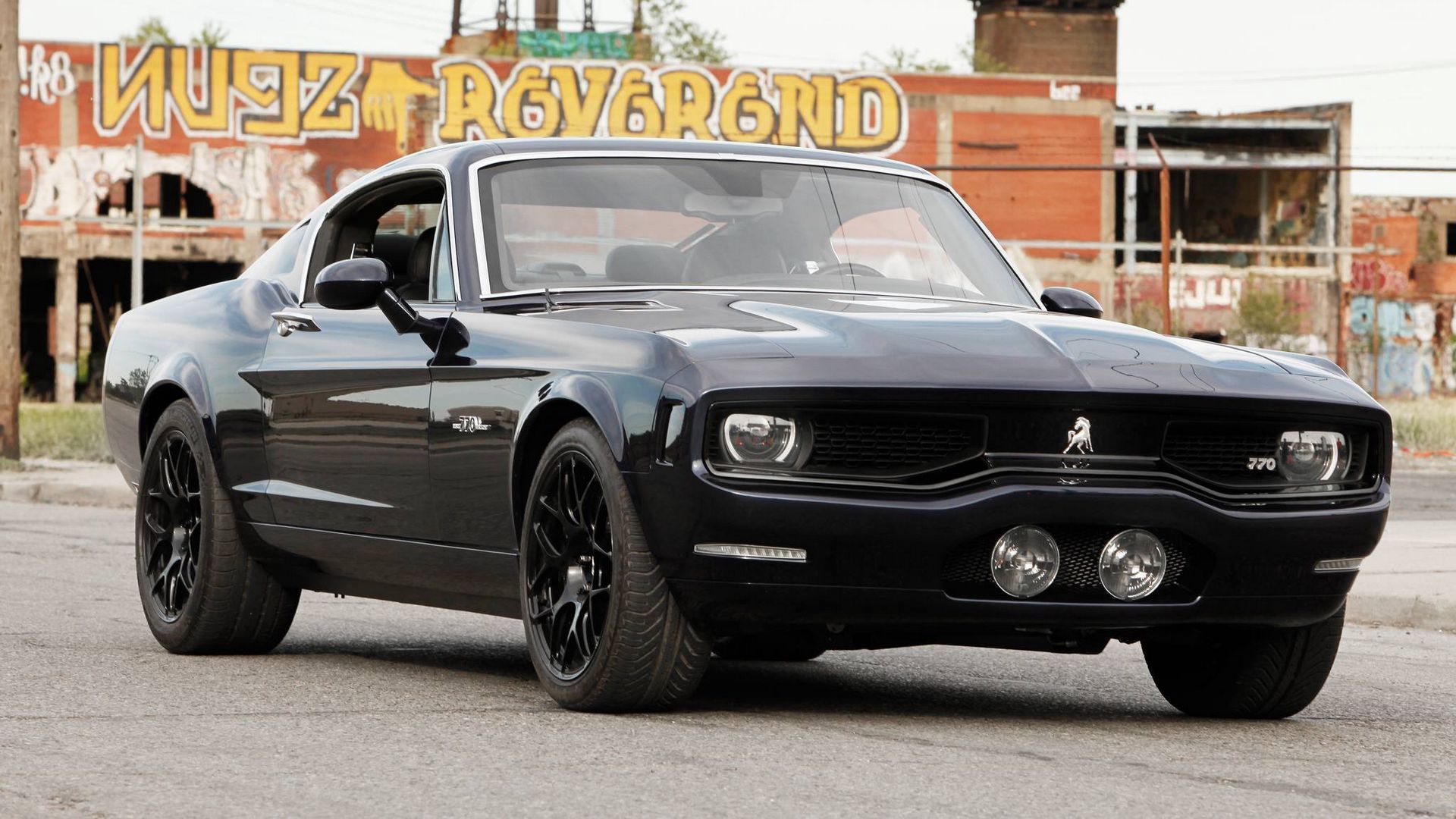
The automotive landscape is constantly evolving, but few designs have proven as enduringly versatile and impactful as the hatchback. Combining the compact footprint often associated with sedans with the practical utility of a station wagon, this body style has carved out a significant niche, appealing to a broad spectrum of drivers seeking efficiency, flexibility, and smart design. Its journey from a niche concept to a global automotive staple highlights a remarkable story of continuous innovation and adaptation, proving its enduring value.
From bustling city streets to sprawling highways, hatchbacks have demonstrated an unparalleled ability to meet diverse consumer demands, adapting over decades to various market preferences and technological advancements. This evolution wasn’t accidental; it was driven by pioneering designs and forward-thinking engineering that challenged traditional notions of vehicle structure and utility. Each significant model introduced new benchmarks for space utilization, accessibility, and overall practicality, transforming how millions approach their daily transport and expanding the very definition of a family car.
In this comprehensive exploration, we delve into the rich history of the hatchback, spotlighting 11 groundbreaking models that have profoundly influenced its development and acceptance worldwide. Drawing on factual insights and historical context, we will objectively examine these vehicles, recognizing their pivotal role in shaping the modern automotive industry. Our journey traces the lineage of innovation, presenting an authoritative overview of the hatchbacks that truly defined their eras, much in the spirit of a detailed product analysis from an esteemed consumer guide.

1. **1938 Citroën Traction Avant Commerciale**The concept of the hatchback, a vehicle body style characterized by a rear door that swings upward to provide access to a versatile cargo area, found its inaugural production expression in the 1938 Citroën Traction Avant Commerciale. This groundbreaking model emerged from the renowned 1934–1957 Citroën Traction Avant series, specifically designed to address a distinct market need for enhanced utility and considerable cargo capacity. Its introduction marked a pivotal moment in automotive history, laying the foundation for a design that would later become ubiquitous worldwide and redefine practical vehicle architecture.
Initially, the 11CV “Commerciale” was conceived with a clear purpose: to serve tradesmen who regularly transported bulky objects as part of their daily business. Professions such as butchers, bakers, vintners, and grocers were among the primary target audience, highlighting the vehicle’s focus on practical application and professional utility. This precise targeting underscored the vehicle’s innovative design, which provided a level of cargo accessibility and volume previously uncommon in vehicles of its type, effectively bridging the gap between passenger car comfort and commercial vehicle functionality.
Before the outbreak of World War II, the tailgate of the Commerciale featured a distinctive two-piece configuration, offering remarkable flexibility. This design comprised an upper section hinged from roof level and a lower section hinged from below, allowing for various loading options depending on the size and nature of the cargo. This early iteration demonstrated Citroën’s commitment to solving practical problems through ingenious mechanical design, setting a crucial precedent for future innovations in vehicle cargo access and multi-purpose utility.
Following the interruption of production due to the war, the Commerciale resumed manufacturing with a significant design refinement that further cemented its influence. The innovative two-piece tailgate evolved into a singular, more streamlined one-piece unit that was hinged exclusively from roof level. This simplified yet highly effective design, which has since become the standard configuration for the vast majority of modern hatchbacks, showcased a commitment to continuous improvement and user-centric functionality, solidifying its legacy as the true pioneer of the modern hatchback concept.
Car Model Information: 2024 Toyota Camry SE
Name: Citroën Traction Avant
Aka: Citroën Traction Avant#UK-built cars
Manufacturer: Citroën
Production: 7: 1934–1941,11: 1934–1957,15/6: 1938–1956
Assembly: Paris
Predecessor: Citroën Rosalie,Citroën C4 & C6
Successor: Citroën DS
Transmission: manual transmission
Class: Executive car
Layout: MF layout
Related: Citroën H Van
BodyStyle: sedan (car)
Engine: Straight-4
Wheelbase: 2910 mm
Abbr: on11CV longue & 15/6 limousine
Length: convert
Width: convert
Height: convert
Weight: convert
Designer: Flaminio Bertoni,André Lefèbvre
Sp: uk
Categories: 1940s cars, 1950s cars, All articles that may contain original research, All articles with dead external links, All articles with unsourced statements
Summary: The Citroën Traction Avant (French pronunciation: [tʁaksjɔnaˈvɑ̃]) is the world’s first mass-produced, semi-monocoque bodied, front-wheel drive car. A range of mostly four-door saloons and executive cars, as well as longer wheelbased “Commerciale”, and three row seating “Familiale” models, were produced with four- and six-cylinder engines, by French carmaker Citroën from 1934 to 1957. With some 760,000 units built, the Traction Avants were the first front-wheel drives made in such (six-figure) quantity.
Whilst front-wheel drive and four-wheel independent suspension had been established in production cars by Auto Union, and subsequently by others a few years prior – the Traction Avant pioneered integrating these into a mass-production car with a crash resistant, largely unitary, monocoque body. Additionally, the car was also an early adopter of rack and pinion steering.
Although the car’s name (“Traction Avant” literally means “front traction”) emphasized its front-wheel drive power delivery, the car stood out at least as much by its much lower profile and stance – made possible by the absence of a separate vehicle frame or chassis under the car’s mostly unitary body – sharply distinguishing it visually from its taller contemporaries.
Get more information about: Citroën Traction Avant
Buying a high-performing used car >>>
Brand: Citroën Model: Traction Avant Commerciale
Price: $23,188 Mileage: 64,336 mi.

2. **1949 Kaiser-Frazer Vagabond and Traveler**In 1949, American automotive innovation entered the burgeoning hatchback arena with the introduction of the Kaiser-Frazer Vagabond and Traveler models. These distinctive vehicles stood out by ingeniously integrating the newfound practicality of a flexible cargo bay within the familiar aesthetic of a traditional sedan. Unlike the more pronounced two-box profiles that would later overtly define many hatchbacks, these models fully retained the classic three-box silhouette characteristic of 1940s sedans, offering a unique and subtle blend of conventional style and enhanced utility.
A key feature contributing to their groundbreaking status and practicality was the inclusion of a versatile two-piece tailgate. This thoughtful design echoed the pioneering efforts seen in the first Citroën 11CV Commerciale, demonstrating a convergent evolution towards maximizing rear access and cargo management. Typically, the upper section would lift upwards, while the lower portion would fold downwards, creating a remarkably wide and unobstructed opening for both loading and unloading, a significant advantage for consumers seeking truly versatile transport options for varied goods.
Beyond the innovative tailgate mechanism, the Vagabond and Traveler models offered remarkable interior flexibility that was far ahead of their time. They were meticulously equipped with folding rear seats, a highly adaptable feature that allowed the distinction between passenger and cargo volumes to be seamlessly integrated into a single, expansive space. This level of adaptability was revolutionary for its era, providing a practical utility that transcended the conventional limitations typically associated with a standard sedan body style.
When the rear seats were folded completely down, these Kaiser-Frazer models revealed a surprisingly large and entirely flat interior cargo area, extending an impressive 8 feet (2.4 meters) in length. This expansive capacity made them exceptionally practical for carrying long or bulky items that would typically necessitate a specialized station wagon or a light commercial vehicle. Consequently, these innovative models rightfully earned the distinguished description of “America’s First Hatchback,” cementing their pivotal place in automotive history as early and influential proponents of multi-purpose vehicle design on the American continent.
Car Model Information: 2024 Toyota Camry SE
Name: Kaiser-Frazer
Industry: automotive industry
Founded: 1945
Founder: Henry J. Kaiser,Joseph W. Frazer
Defunct: [object Object]
Fate: Willys
Successor: Kaiser Jeep
HqLocationCountry: United States
KeyPeople: Edgar Kaiser Sr.
Products: Automobile
Categories: 1945 establishments in Michigan, 1952 disestablishments in Michigan, American companies established in 1945, Articles with short description, Cars introduced in 1947
Summary: The Kaiser-Frazer Corporation (1947–1953 as Kaiser-Frazer) was an American automobile company. It was founded jointly by industrialist Henry J. Kaiser and automobile executive Joseph W. Frazer. In 1947, the company acquired the automotive assets of Graham-Paige, of which Frazer had become president near the end of World War II. Kaiser-Frazer was one of a few US automakers to achieve success after World War II, if only for a few years. Joseph W. Frazer left the company in 1949, replaced as president by Henry’s son Edgar F. Kaiser.
In 1953, Kaiser bought the ailing Willys-Overland company, mainly for its Jeep brand, and merged the Kaiser and Willys operations under the “Kaiser-Willys Corporation”. The Willys-Overland branch was renamed “Willys Motors”, until ten years later, in 1963, it was renamed Kaiser Jeep.
Get more information about: Kaiser-Frazer
Buying a high-performing used car >>>
Brand: Kaiser-Frazer Model: Vagabond and Traveler
Price: $23,188 Mileage: 64,336 mi.

3. **1959 Austin A40 Farina Countryman**The British Motor Corporation (BMC) further advanced the concept of flexible utility vehicles within a compact package with the significant launch of the ‘Countryman’ version of the Austin A40 Farina two-box economy car in 1959. This innovative addition built upon the respected lineage of its A30 and A35 Countryman predecessors, all characterized as very small estate cars. However, the A40 Farina Countryman introduced a notable and influential innovation in its rear access system, distinguishing it significantly from earlier designs and contributing substantially to the evolving definition of what a versatile vehicle could be.
Instead of the conventional, often cumbersome, sideways-opening rear doors typically found on traditional estate cars of the period, the 1959 A40 Farina Countryman ingeniously adopted a horizontally split tailgate. This clever and practical arrangement featured a top-hinged upper door and a bottom-hinged lower door, offering significantly improved versatility for loading various types of cargo, from groceries to small pieces of furniture. This specific design choice provided more controlled and adaptable access to the rear compartment, making it considerably easier to manage items without requiring the full, wide swing of a conventional door.
To meticulously accommodate this innovative split tailgate design, a subtle yet crucial modification was made to the vehicle’s rear. The rear window of the A40 Countryman was crafted to be marginally smaller than that of the 1958 A40 Farina saloon. This precise adjustment allowed for the seamless integration of a sturdy frame that could be effortlessly lifted using roof-mounted hinges, further supported by robust side support struts. The careful engineering ensured both the structural integrity and the smooth, reliable operation of the new rear access system, enhancing the vehicle’s overall functionality and user experience.
Moreover, the design of the lower panel of the tailgate was meticulously thought out to maximize utility. It was purposefully made flush with the floor of the cargo area, creating an unhindered and flat loading platform when opened, simplifying the process of sliding in heavy or awkward items. Furthermore, its bottom-mounted hinges were specifically strengthened to robustly withstand the stresses of repeated loading and unloading, ensuring long-term durability and consistently reliable performance. These detailed considerations solidified the A40 Farina Countryman’s role as a sophisticated early example of multi-purpose vehicle design within a highly compact and accessible footprint.
Car Model Information: 2024 Toyota Camry SE
Sp: uk
Name: Austin A40 Farina
Aka: Austin A40 Futura (Sweden)
Manufacturer: Austin Motor Company
Production: 1958–1967,342,162 produced
Assembly: Longbridge
Class: Compact car
Layout: FR layout
BodyStyle: Sedan (automobile)
Designer: Pinin Farina
Predecessor: Austin A35
Successor: Morris 1100
Categories: 1960s cars, All Wikipedia articles written in British English, Articles with short description, Austin vehicles, CS1: long volume value
Summary: The Austin A40 Farina is a small, economy car introduced by Austin in saloon (1958) and A40 Countryman (1959) estate versions. It has a two-box body configuration. It was badged, like many before it, as an A40, consistent with Austin’s naming scheme at the time, based on the approximate engine output in horsepower; and to distinguish it from other A40 models, it was also given a suffix name – this one being the Farina, reflecting the all-new design by Italian Battista Farina’s Pinin Farina Turin studio.
Austin had been merged into the British Motor Corporation (BMC) in 1952 and – unusually for BMC at the time – the A40 Farina was sold only as an Austin and not rebadged for sale under any other BMC brands. The Farina was the first Austin A40 not named after a county of England, and the last in the Austin A40 line.
The 1959 A40 Countryman version stands out by its layout as a small estate car with an upward (and downward) opening tailgate, and is therefore viewed as one of the earliest examples of a volume production hatchback.
Get more information about: Austin A40 Farina
Buying a high-performing used car >>>
Brand: Austin Model: A40 Farina Countryman
Price: $23,188 Mileage: 64,336 mi.

4. **1965 MGB GT**The practical advantages and design flexibility inherent in the hatchback concept were not destined to be confined solely to utility vehicles and economy cars; they soon began to profoundly influence the realm of high-performance sports cars. A truly significant milestone in this exciting crossover occurred in late 1965 with the seminal introduction of the MGB GT. This particular model showcased a brilliant and forward-thinking reinterpretation of the classic MGB roadster, definitively demonstrating that exhilarating performance and enhanced cargo accessibility could indeed coexist harmoniously within a single, compelling automotive package.
The sophisticated transformation of the beloved MGB roadster into a sleek hatchback coupé was skillfully undertaken by the globally renowned Italian design house Pininfarina. Their unparalleled expertise brought a sleek, aerodynamic, and aesthetically cohesive design to the vehicle, seamlessly integrating the novel rear hatch into the MGB’s iconic and widely admired lines. This masterful design not only significantly enhanced the car’s visual appeal and timeless elegance but also fundamentally altered its utility, providing a closed, more weather-resistant cabin alongside substantially improved luggage capacity for a sports car.
What rendered the MGB GT particularly significant and a true trailblazer was its distinguished status as the first volume-production sports car to proudly feature a hatchback body. Prior to this pivotal moment, similar designs, such as the luxurious Aston Martin DB2 or the nimble AC Aceca, were typically produced in much smaller, more exclusive numbers, catering primarily to a niche, high-end market. The MGB GT, however, brought the undeniable practicality and versatility of a rear hatch to a much broader and more accessible audience of sports car enthusiasts, thereby challenging conventional expectations of what a performance vehicle could genuinely offer in terms of everyday usability.
This innovative integration meant that sports car owners no longer had to endure heavy compromises on luggage space, making weekend trips or longer touring adventures considerably more feasible and comfortable. The inclusion of the rear hatch allowed for significantly easier loading of bulkier items, while the enclosed cabin provided enhanced comfort, superior noise insulation, and increased security for occupants and belongings. The MGB GT thus became a pioneering and influential example of how thoughtful and intelligent design could dramatically elevate the versatility and broaden the appeal of a sports car, solidifying the hatchback’s potential across diverse and previously distinct automotive segments.
Car Model Information: 2019 Hyundai SANTA FE 2.4 Ultimate
Name: MGB
Caption: 1969 MGB roadster – rollover bar non-standard
Layout: FR layout
Manufacturer: British Motor Corporation,British Leyland,Rover Group
Production: 1962–1980 (original),1992–1995 (MG RV8)
Predecessor: MG MGA
Successor: MG F / MG TF
Class: Sports car
Assembly: Abingdon, Oxfordshire,Enfield, New South Wales,Cowley, Oxford
Categories: 1970s cars, 1980s cars, 1990s cars, All Wikipedia articles written in British English, All articles lacking reliable references
Summary: The MGB is a two-door sports car which was manufactured from 1962 until 1980 by the British Motor Corporation (BMC) (later the Austin-Morris division of British Leyland) and marketed under the MG marque. It was announced and its details first published on 19 September 1962. Introduced as a four-cylinder soft-top roadster, later variants include the MGB GT three-door 2+2 coupé (1965–1980), the six-cylinder sports car and coupé MGC (1967–1969), and the eight-cylinder 2+2 coupé, the MGB GT V8 (1973–1976).
Replacing the MGA in 1962, production of the MGB and its variants continued until 1980, though fixed roof GT models ceased export to the US in 1974. Sales for the MGB, MGC and MGB GT V8 combined totaled 523,836 cars. After a 12-year hiatus, the MGB re-entered production as the heavily modified MG RV8 with a limited run of 2,000 cars before its final replacement in 1995 by the MG F.
Get more information about: MG MGB
Buying a high-performing used car >>>
Brand: MG Model: MGB GT
Price: $21,898 Mileage: 51,164 mi.
Read more about: Dream Drives: 15 Classic Cars That Should Absolutely Be Revived for Today’s Roads

5. **1961 Renault 4**The landscape of mass-market automobiles was irrevocably altered in 1961 with the truly impactful introduction of the Renault 4. Positioned strategically as a moderately upscale yet supremely practical alternative to the minimalist Citroën 2CV, the Renault 4 rapidly carved out a unique and enduring identity through its innovative design and remarkable, user-friendly utility. It swiftly became a defining vehicle of its era, profoundly influencing subsequent generations of compact cars worldwide with its pioneering approach to efficient passenger and cargo integration.
The Renault 4 achieved a monumental feat in automotive production and consumer acceptance, becoming the first million-selling, mass-produced, compact two-box car to feature a distinctively steeply raked rear side. This immediately recognizable design incorporated a large, highly functional, one-piece, lift-gate hatch, which fundamentally redefined accessibility to the vehicle’s rear compartment and cargo area. This innovative lift-gate was a crucial element, enabling significantly easier loading and unloading of goods compared to traditional, restrictive trunk designs, thereby dramatically enhancing its appeal to an extraordinarily broad consumer base seeking convenience and practicality.
Throughout its extensive and successful production life cycle, Renault consistently marketed the R4 not explicitly as a “hatchback”—a term that only gained widespread currency and recognition around 1970—but rather as a “small station wagon.” This specific nomenclature, mirroring marketing strategies seen in Austin’s own series of small Countryman estate models, powerfully underscored its inherent utility, adaptable interior, and surprisingly spaciousness, even though the company offered only this single, highly efficient two-box body style. The remarkable consistency in its design and marketing powerfully highlighted its dedicated focus on maximum practicality and widespread applicability.
The enduring appeal and robust design engineering of the Renault 4 were vividly reflected in its extraordinary production longevity, a testament to its intrinsic value, continuing its successful run through to 1992. During this remarkable, multi-decade production run, the vehicle sold over 8 million units globally, an astounding figure that speaks volumes about its practical brilliance, fundamental reliability, and widespread international acceptance across diverse markets. Its profound legacy as a versatile, affordable, and profoundly influential mass-produced compact car remains a significant and indelible chapter in the history of automotive design and consumer-focused engineering.
Read more about: 15 Iconic Nameplates: Classic Car Brands Fueling the Electric Revolution

6. **1965 Renault 16**In 1965, Renault further expanded the hatchback concept with the introduction of the Renault 16, a model distinguished as the first volume production two-box hatchback specifically designed as a family car. It entered the D-segment, a market previously dominated by conventional sedans, offering a compelling alternative that emphasized practicality and innovative design. This launch marked a significant evolution in automotive thinking, challenging established norms for family transportation.
The Renault 16 was engineered with exceptional interior flexibility, a hallmark of its groundbreaking design. Its rear seats were highly adaptable, capable of being adjusted to various positions, folded flat to expand cargo capacity, or even entirely removed. This versatile seating arrangement allowed the vehicle to seamlessly accommodate diverse family needs, from everyday commuting to carrying large items, significantly enhancing its utility compared to traditional sedans of the era.
This model achieved remarkable success in a competitive market, demonstrating that a hatchback could effectively serve as a primary family vehicle. Its innovative body style quickly gained widespread acceptance, validating consumer demand for enhanced accessibility and flexible cargo solutions without sacrificing passenger comfort. Over its extensive 15-year production run, the Renault 16 sold over 1¾ million units, a testament to its enduring appeal and its pivotal role in solidifying the hatchback’s status as a mainstream automotive choice.
Read more about: 15 Iconic Nameplates: Classic Car Brands Fueling the Electric Revolution

7. **1967 Simca 1100**The 1967 Simca 1100 represented a critical advancement in modern hatchback design, fundamentally integrating key engineering principles that would become standard for mass-market family cars. It notably combined front-wheel drive, a space-efficient transverse engine layout, unitary bodywork, and independent suspension, marking it as the first hatchback to feature this comprehensive suite of modern attributes simultaneously. This holistic design approach optimized packaging, handling, and overall efficiency.
Beyond its mechanical innovations, the Simca 1100 was celebrated for its versatility, offered in both three-door and five-door hatchback variants. This range allowed the hatchback models to assume a central role within Simca’s vehicle lineup, traditionally held by saloons. The availability of multiple configurations underscored the design’s adaptability and its appeal to a broad consumer base seeking efficient and flexible transportation solutions for diverse needs.
The Simca 1100’s influence extended further through its complete model range, which also included station wagon and panel van versions built upon the same fundamental architecture. This broad utility showcased the inherent flexibility of the core hatchback design, demonstrating its suitability across multiple segments and applications. Its groundbreaking integration of modern engineering set a crucial precedent for future compact, transversely-engined, front-wheel-drive vehicles globally.
Read more about: Hidden Gems of the Highway: Revisiting 12 Forgotten Compact Cars of the 1960s

8. **1967 Citroën Dyane**In 1967, Citroën introduced the Dyane, an important entry designed specifically to compete with the successful Renault 4 in the evolving hatchback market. Conceived as a redesigned version of the iconic 2CV, the Dyane aimed to enhance modern utility and appeal by incorporating contemporary design elements. This strategic move by Citroën highlighted the growing recognition of the hatchback’s market potential and its role in competitive product offerings within the economy car segment.
A key feature of the Citroën Dyane was its prominent, large rear hatch, a deliberate design choice engineered to significantly improve practicality and cargo accessibility. This enhancement provided a clear functional advantage over the original 2CV, which had more limited rear access, directly addressing consumer demands for greater versatility in compact vehicles. The large hatch mirrored the functional benefits that were rapidly gaining popularity among rival models.
The Dyane’s development underscored the intensifying competition among manufacturers in the economy car sector, all striving to offer the most practical and user-friendly vehicles. By updating the established 2CV platform with a more contemporary and functional body style, Citroën aimed to attract buyers who prioritized ease of loading and adaptable interior space. This move was vital for Citroën to maintain its market relevance and competitive edge against the backdrop of modernizing automotive designs.

9. **1969 Austin Maxi**The Austin Maxi, launched in 1969, emerged as a significant player in the burgeoning hatchback market, positioned as a larger companion to the innovative Mini within the British Motor Corporation’s portfolio. Designed by the renowned Sir Alec Issigonis, the Maxi was conceived as a five-door saloon that ingeniously integrated a spacious rear hatch, aiming to provide enhanced practicality and versatility for families, reflecting the increasing confidence in the hatchback format for mainstream applications. It featured a transversely-mounted SOHC engine and a five-speed transmission.
A key aspect of the Maxi’s pioneering engineering was its highly flexible seating arrangement that could be configured to form a double bed, showcasing exceptional adaptability for both utility and leisure activities, a testament to its multi-purpose design. The distinctive rear design, featuring its substantial hatch, was a pragmatic outcome of design constraints, as Issigonis was required to use the same doors as the larger Austin / Morris 1800, leading to a “curtailed rear end with a big hatch.”
Operating in the same D-segment as the Renault 16, the Austin Maxi presented a formidable alternative. While sharing similar specifications and exterior dimensions with its French counterpart, the Maxi distinguished itself by offering significantly more interior space, largely due to its efficient transverse engine layout. This smart use of internal volume provided a clear advantage, establishing the Maxi as a prime example of intelligent packaging and versatility in family-oriented hatchbacks.
Read more about: Steer Clear: 14 Vehicles Notorious for Early Breakdowns Before 50,000 Miles

10. **1974 Volkswagen Golf**The year 1974 heralded a monumental shift in automotive design with the introduction of the Volkswagen Golf, a vehicle destined to replace the globally ubiquitous Beetle. Tasked with succeeding an automotive icon, the Golf fully embraced the modern hatchback paradigm, offering a fresh, practical, and highly efficient design that rapidly captivated consumers across Europe and beyond, establishing a new global benchmark for compact vehicles.
The Golf’s introduction perfectly coincided with, and indeed fueled, a burgeoning demand for compact hatchbacks throughout Europe during the 1970s. This period witnessed a significant proliferation of similarly designed models, as manufacturers keenly recognized the growing consumer preference for space-efficient, versatile cars. The Golf, with its sharp styling and intelligent packaging, quickly became a definitive symbol of this new automotive era, embodying an ideal blend of compact dimensions and surprisingly expansive interior utility.
By the late 1970s and early 1980s, the profound influence of vehicles like the Golf was unmistakable. The vast majority of superminis and compact cars on the market had been either updated or entirely redesigned as hatchback models, signaling a fundamental transformation in consumer tastes and automotive design philosophy. The Golf’s widespread success unequivocally proved that a well-engineered hatchback could serve as the ultimate template for mass-market vehicles, delivering an unparalleled combination of practicality, economy, and universal appeal.
Car Model Information: 2024 Volkswagen Golf R 2.0T DSG
Name: Volkswagen Golf
Caption: Volkswagen Golf Mk8
Manufacturer: Volkswagen
Production: 1974–present
Class: Compact car
Predecessor: Volkswagen Beetle
Successor: Volkswagen ID.3
Alt: grey car (hatchback)
Categories: 1980s cars, 1990s cars, 2000s cars, 2010s cars, 2020s cars
Summary: The Volkswagen Golf () is a compact car/small family car (C-segment) produced by the German automotive manufacturer Volkswagen since 1974, marketed worldwide across eight generations, in various body configurations and under various nameplates – including as the Volkswagen Rabbit in the United States and Canada (Mk1 and Mk5), and as the Volkswagen Caribe in Mexico (Mk1).
The original Golf Mk1 was a front-engined, front-wheel drive replacement for the air-cooled, rear-engined, rear-wheel drive Volkswagen Beetle. Historically, the Golf is Volkswagen’s best-selling model and is among the world’s top three best-selling models, with more than 35 million units sold as of 2019.
Initially, most Golfs were hatchbacks, with the three-door version being somewhat more popular than the five-door. Other variants include an estate (Variant, from 1993), convertible (Cabriolet or Cabrio, from 1979), and a Golf-based saloon called the Jetta, Vento (from 1992), or Bora (from 1999). The Golf covers economy to high-performance market segments.
The Golf has won awards, including the World Car of the Year in 2009, with the Mk6 and in 2013 with the Mk7. Along with the Renault Clio and the Vauxhall Astra, the Golf is one of only three cars to have won European Car of the Year twice, in 1992 and 2013. The Golf has made the annual Car and Driver 10Best list multiple times. The Mk7 won the Motor Trend Car of the Year award in 2015, and the Mk1 GTI also won the award in 1985. The Mk4 won for the best-selling car in Europe in 2001.
Get more information about: Volkswagen Golf
Buying a high-performing used car >>>
Brand: Volkswagen Model: Golf
Price: $42,963 Mileage: 10,238 mi.
Read more about: Beyond the Benchmark: 10 Long-Haul Diesels That Redefine Durability, Clocking Over 400,000 Miles Before Retirement
11. **1976 Rover 3500**While the hatchback concept initially gained traction in compact and family car segments, the 1976 introduction of the Rover 3500 by British Leyland elegantly demonstrated the body style’s adaptability to more premium automotive categories. This model was a distinctive rear-wheel-drive executive car, notably offered as a five-door hatchback, a bold move that broadened perceptions of where the hatchback format could successfully operate, confirming its capacity for utility and sophistication beyond purely economic considerations.
The Rover 3500’s entry into the executive segment was particularly significant, as this class had historically been the exclusive preserve of formal sedans. By presenting a hatchback option, Rover effectively communicated that enhanced cargo access and a versatile interior were indeed desirable attributes even for discerning buyers who also sought luxury and performance. This challenged conventional wisdom, opening new avenues for integrating practicality into premium vehicle offerings and thereby diversifying the hatchback’s market appeal.
Throughout the 1980s and well into the late 2000s, hatchbacks solidified their position as a cornerstone of manufacturers’ D-segment offerings across Europe. Models such as the Ford Mondeo and Opel Vectra routinely appeared in five-door hatchback configurations. The Rover 3500, arguably a pioneer for executive hatchbacks, contributed to this broader trend by validating the format’s versatility and its ability to blend traditional prestige with functional benefits for a demanding and evolving market.
***
Read more about: 14 Stars Who Served: Unexpected Military Pasts of Famous Faces Before Hollywood Called
The journey of the hatchback from an ingenious design concept to a global automotive phenomenon is a testament to continuous innovation and an unwavering commitment to consumer utility. The pivotal models examined in this exploration, from the pioneering Citroën Traction Avant Commerciale to the versatile Rover 3500, each contributed uniquely to refining and popularizing this distinctive vehicle architecture. They collectively demonstrated that efficiency, practicality, and adaptable space could be seamlessly integrated into a single, compelling package, effectively redefining the capabilities and expectations for personal transportation. This evolution underscores the hatchback’s enduring value and its central role in shaping the modern automotive landscape, continually offering a smart, flexible solution for a diverse range of driving needs.



